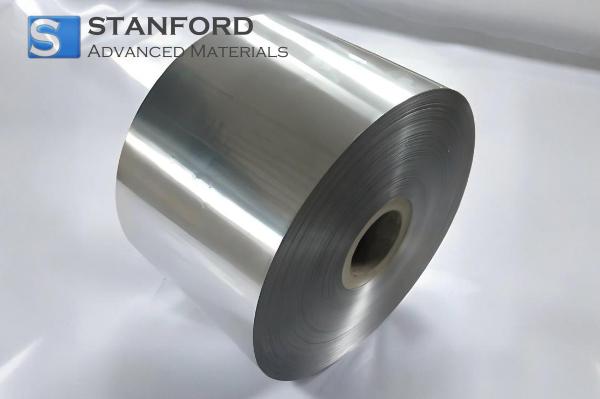Dysprosium: Element Properties And Uses
Introduction to Dysprosium
Dysprosium (symbol Dy, atomic number 66) is a rare earth element and a member of the lanthanide series of the periodic table. Dysprosium was discovered in 1886 by Per Teodor Cleve, a Swedish chemist. It was extracted from erbium-containing minerals. It was named from the Greek dysprositos, meaning "hard to obtain," due to its rarity and ease of extraction.
Dysprosium occurs naturally in minerals like monazite, bastnäsite, and xenotime, typically in combination with other lanthanides. While relatively rare, its distinctive properties—most notably magnetic, thermal, and neutron-absorbing properties—make it essential for contemporary technology.
Physical Properties of Dysprosium
Dysprosium possesses significant physical properties that make it valuable in high-performance applications:
|
Property |
Value |
Units |
|
Atomic Number |
66 |
– |
|
Atomic Weight |
~162.5 |
u |
|
Melting Point |
1407 |
°C |
|
Boiling Point |
2567 |
°C |
|
Density |
8.55 |
g/cm³ |
|
Electron Configuration |
[Xe] 4f¹⁰ 6s² |
– |
White-silvery dysprosium is very soft in bulk but strongly reactive when finely powdered. The boiling and melting points are high within the range for lanthanides, and this capacity to resist heat is of utility. For more data, please check Stanford Advanced Materials (SAM).
Chemical Properties Description
Chemically, dysprosium is defined by its stable +3 oxidation state, which predominates in most of its compounds. Its ionic nature and reactivity allow it to produce a wide range of oxides, halides, and complex salts.
Some of the key chemical properties are:
•Reactivity: Dysprosium metal reacts slowly with cold water but readily with acids to give Dy³⁺ ions.
•Formation of the oxide: Highly thermally stable dysprosium oxide (Dy₂O₃) is widely used as a target material for lasers and magnets.
• Magnetic behaviour: Dysprosium is antiferromagnetic at low temperatures and ferromagnetic at temperatures below 85 K, thus highly valued for use in magnetic alloys.
These chemical properties combined with thermal stability make dysprosium the most suitable material for applications requiring magnetic enhancement and high-temperature operation.
Preparation and Extraction
Production of dysprosium commences with rare earth mineral extraction:
1. Processing of minerals: Monazite and bastnäsite minerals are ground and processed with acid or alkali to separate rare earth elements.
2. Solvent Extraction and Ion Exchange: Dysprosium is separated from the remaining lanthanides by selective solvent extraction or ion exchange resins to obtain a purified dysprosium solution.
3. Oxide conversion: The purified substance is precipitated and calcined to yield Dy₂O₃, the most common form used in industry.
4. Production of Metal: Lithium or calcium metal is used to reduce dysprosium oxide in high-temperature furnaces to obtain pure dysprosium metal.
Due to its chemical reactivity, careful handling is required, particularly when powdered, as powdered dysprosium is pyrophoric.
Industrial and Technological Uses
The combination of the magnetic, thermal, and neutron-absorbing characteristics of dysprosium makes it essential in several modern industries:
1. High-Performance Magnets
• Dysprosium is a critical dopant in neodymium-iron-boron (NdFeB) magnets, enhancing coercivity and thermal stability.
• Illustration: In electric vehicles, 5–10% dysprosium in NdFeB magnets allows motors to maintain magnetic performance up to 180°C as opposed to only 120°C when there is no dysprosium.
• Such magnets are used in EV motors, wind turbine generators, and aerospace actuators.
2. Lasers and Optical Devices
• Dysprosium-doped material is used in fibre and solid-state lasers to emit visible and infrared light.
• Case Study: Dysprosium-doped YAG (Yttrium Aluminium Garnet) crystals are used in infrared laser systems for industrial and medical cutting.
3. Nuclear Reactors
• Dysprosium has a large neutron absorption cross-section and is therefore ideally suited as control rods in nuclear reactors.
• It aids in fission reaction control, improving safety and efficiency in pressurised water reactors (PWRs) and fast reactors.
4. Radiation Dosimeters
• Ionising radiation in medical, industrial, and environmental uses is detected with dysprosium-doped sensors.
• Calcium sulfate dosimeters with Dy activation are used in centres where radiation treatments are administered to ensure accurate dose delivery.
5. New Alloys and Electronics
• When added to ferromagnetic and magnetostrictive alloys, dysprosium provides stability and function at elevated temperatures.
• Due to its unique magnetic properties, it is used in memory devices and in spintronic devices.
Frequently Asked Questions
Where is dysprosium found?
It occurs in minerals such as monazite, bastnäsite, and xenotime, generally alongside other rare earth elements.
What are the principal chemical characteristics of dysprosium?
It has primarily a +3 oxidation state, forms stable oxides, and has high thermal and chemical stability.
How is dysprosium created?
By mineral processing, solvent extraction, ion exchange, and reduction of the oxide to produce metallic dysprosium.
What are its principal commercial applications?
High-performance magnets, lasers, nuclear reactor control rods, dosimeters, and special alloys.
Are there any safety considerations?
Yes, dysprosium powder is reactive and potentially pyrophoric, and should be handled with care in closed environments.

 Bars
Bars
 Beads & Spheres
Beads & Spheres
 Bolts & Nuts
Bolts & Nuts
 Crucibles
Crucibles
 Discs
Discs
 Fibers & Fabrics
Fibers & Fabrics
 Films
Films
 Flake
Flake
 Foams
Foams
 Foil
Foil
 Granules
Granules
 Honeycombs
Honeycombs
 Ink
Ink
 Laminate
Laminate
 Lumps
Lumps
 Meshes
Meshes
 Metallised Film
Metallised Film
 Plate
Plate
 Powders
Powders
 Rod
Rod
 Sheets
Sheets
 Single Crystals
Single Crystals
 Sputtering Target
Sputtering Target
 Tubes
Tubes
 Washer
Washer
 Wires
Wires
 Converters & Calculators
Converters & Calculators
 Write for Us
Write for Us




 Chin Trento
Chin Trento



